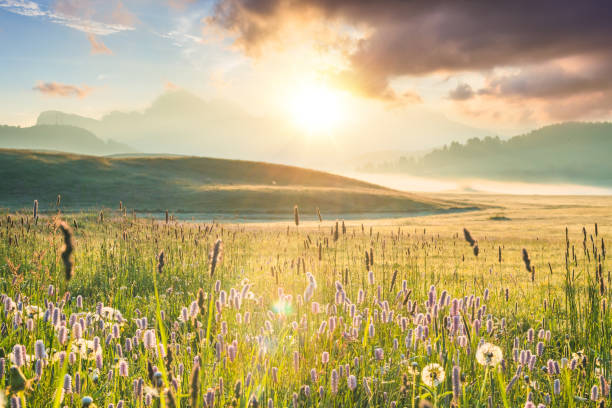How To Describe A Village In Writing (10 Creative Words, Quotes & Steps)
Describing a village in writing is akin to embarking on a poetic journey through a miniature universe, where every word becomes a brushstroke on the canvas of the reader’s imagination.
It is an art form that transcends mere description, allowing the writer to transport readers into a world rich with sensory delights, cultural tapestries, and the lives of the people who call it home.
In this exploration of the picturesque and the profound, the village becomes not just a setting but a living, breathing character, woven into the very fabric of the narrative.
This endeavor is a symphony of words, orchestrating the senses, emotions, and experiences of the reader, inviting them to wander the cobbled streets, breathe in the scents of a bustling marketplace, and connect with the souls that populate this rustic idyll.
Join us on this literary expedition, as we delve into the nuances, the techniques, and the magic of describing a village in writing, a journey that promises to ignite the imagination and leave an indelible mark on the literary landscape.
How To Describe A Village In Writing
Describing a village in writing involves capturing its essence and painting a vivid picture for the reader. Here’s a step-by-step process to help you do just that:
Observation
Begin by visiting the village or recalling your memories if you’ve been there before. Pay close attention to its unique features, such as its natural surroundings, architecture, people, and culture.
Choose a Focus
Decide on the aspect of the village you want to emphasize. It could be the landscape, the community, a specific event, or the atmosphere. This focus will guide your description.
Create an Outline
Plan the structure of your description. Consider whether you want to follow a chronological order or organize your thoughts thematically. An outline will help you stay organized.
Start with an Introduction
Begin your description with a captivating introduction that sets the tone for the entire piece. Mention the name and location of the village and provide a brief overview of what readers can expect.
Describe the Landscape
Paint a picture of the natural surroundings. Mention the terrain, vegetation, bodies of water, and any prominent geographical features. Use descriptive language to convey the beauty and uniqueness of the landscape.
Capture the Sights
Describe the village’s buildings, landmarks, and any noteworthy structures. Highlight the architectural style and historical significance of these places.
Introduce the People
Provide insight into the community. Describe the residents, their way of life, traditions, and occupations. Share anecdotes or personal encounters to make the description more engaging.
Convey the Atmosphere
Use sensory details to convey the atmosphere of the village. Describe the sounds, smells, and general ambiance. Is it bustling with activity or peaceful and serene?
Highlight Unique Features
Mention any specific customs, festivals, or events that make the village distinct. Explain their significance and how they shape the culture of the place.
Include Personal Experiences
Share your personal experiences or feelings about the village. This adds a personal touch to your description and helps the reader connect with your perspective.
Use Descriptive Language
Employ vivid and sensory-rich language. Paint a picture with your words by using metaphors, similes, and descriptive adjectives.
Organize the Description
Make sure your description flows logically. Transition smoothly between different aspects of the village, ensuring that the reader can follow your narrative effortlessly.
Conclusion
Summarize your description by reiterating the key points and leaving a lasting impression on the reader. You can also share your overall feelings or insights about the village.
Proofread and Edit
Review your writing for grammar, spelling, and coherence. Make necessary revisions to enhance the clarity and quality of your description.
Seek Feedback
Share your description with others and ask for their feedback. They can provide valuable input on how well your writing conveys the essence of the village.
By following these steps, you can create a compelling and evocative description of a village in your writing.
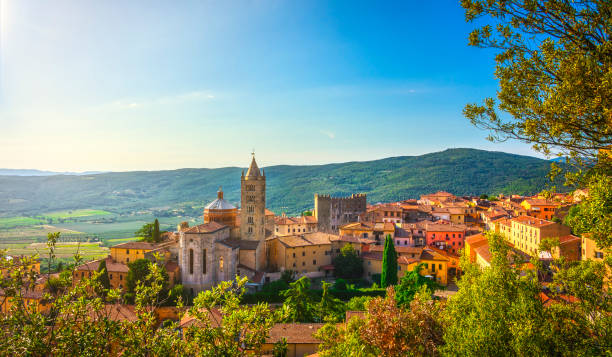
Words To Describe Village
Quaint: The village, with its charming cottages and cobblestone streets, transports visitors to a simpler, bygone era.
Serene: Nestled in a valley, the village enjoys a tranquil atmosphere, offering a peaceful escape from the hustle and bustle of city life.
Community-focused: Residents actively engage in communal activities, from shared gardening projects to local events, fostering a strong sense of belonging.
Scenic: Breathtaking vistas of rolling hills and meadows surround the village, creating a scenic backdrop that enhances its natural beauty.
Timeless: With historical buildings and traditional customs intact, the village feels timeless, preserving its cultural heritage for future generations.
Sustainable: Embracing eco-friendly practices, the village thrives on locally sourced produce and renewable energy, exemplifying a commitment to sustainability.
Welcoming: The friendly locals extend a warm welcome, making visitors feel like part of the community from the moment they arrive.
Rustic: Weathered barns and weather-worn fences contribute to the village’s rustic charm, embodying a connection to the land and its history.
Quirky: Eccentric festivals and unique local traditions add a touch of whimsy, making the village stand out with its own delightful idiosyncrasies.
Close-knit: Regular gatherings at the village square or communal spaces showcase the close bonds shared by neighbors, creating a tight-knit social fabric.
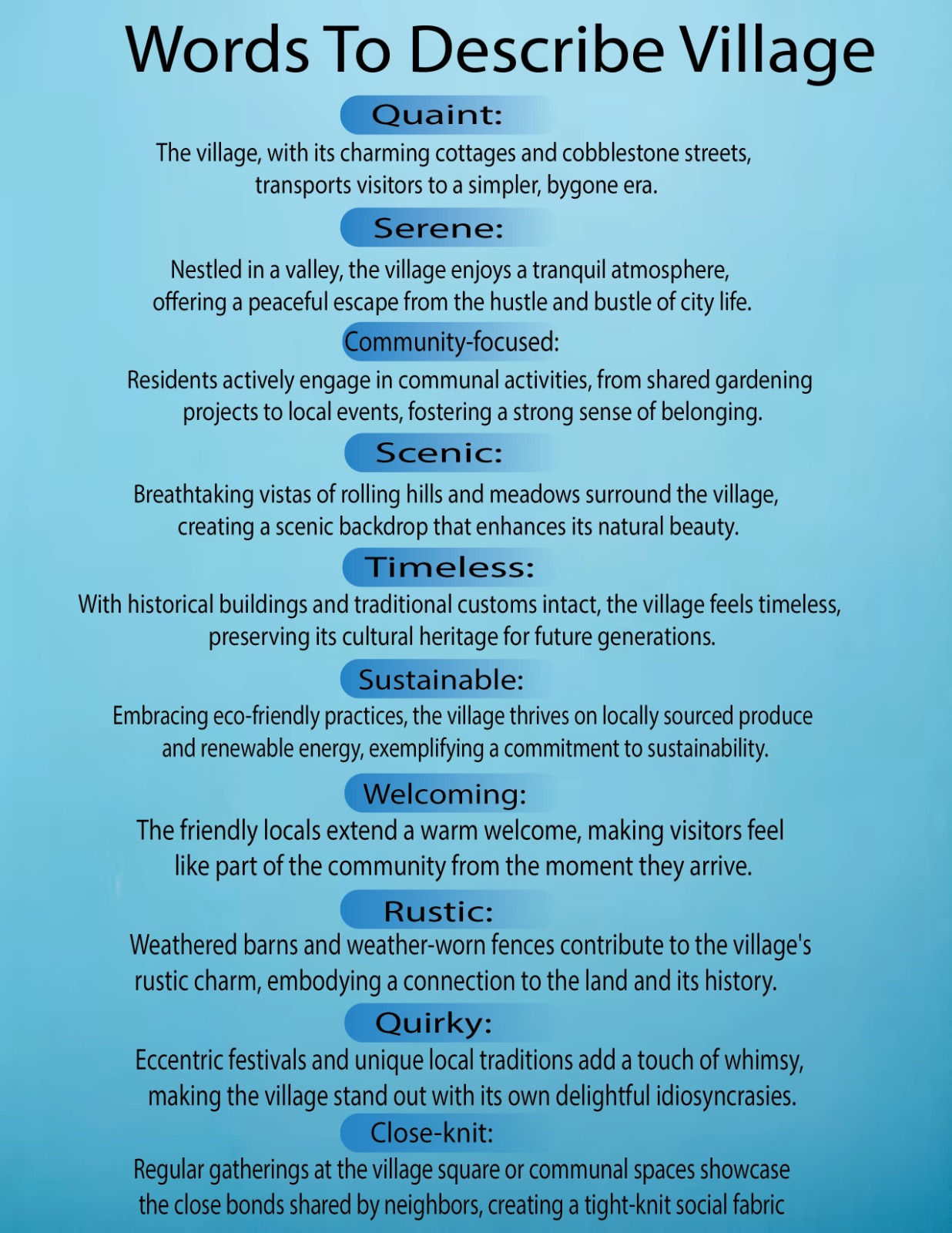
Quotes About Village
“Villages are like pearls. Each one is unique, formed with care, and treasured by those who truly appreciate their beauty.”
“Life in the village teaches us that happiness is found in simple pleasures, shared with the ones we love.”
“A village is not just a place on a map; it’s a tapestry of stories, woven together by the threads of its people.”
“Village life is a mosaic of faces, each telling a story of resilience, laughter, and the enduring spirit of community.”
Setting the Stage
Setting the stage for a village description is like selecting the perfect brush for a masterpiece or tuning the orchestra before a symphony.
It’s the magical moment when you choose the portal to transport your readers into a world where time slows, and nature’s brushstrokes paint the most exquisite landscapes.
The village you pick is the key, a hidden gem in the tapestry of your narrative, unlocking doors to a realm of sensory wonder.
The season and climate act as your mood-setters, whispering secrets of ambiance, their whispered cues woven into every word.
It’s the grand prologue to a tale of pastoral beauty or rustic mystique, and it all starts here, setting the stage for a journey of the senses.
Selecting the village for description
Selecting the village for description is a writer’s quest for the heart and soul of their narrative canvas. It’s an artful deliberation, a delicate dance between the personal and the poetic.
The village you choose can be a character in its own right, a silent protagonist in your literary tapestry. It may be a place you intimately know, where you’ve strolled its cobblestone streets and tasted the stories hidden in its nooks and crannies.
Alternatively, it might be an uncharted territory, where your research weaves an intricate web of discovery.
The choice is profound, for it shapes not only the setting but also the emotions, themes, and messages that will emerge from your work.
It’s an ode to the significance of place, a commitment to the magic of storytelling, and a promise to immerse your readers in the enchanting world you’re about to create.
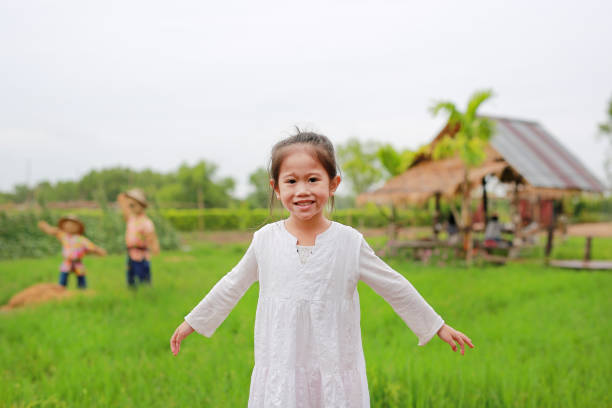
Capturing the Senses
Capturing the senses in writing is akin to a symphony for the soul. It’s the art of weaving words that sing with the hues of visual tapestries, dance to the rhythm of ambient sounds, and beckon with fragrances both familiar and exotic.
With the deft strokes of a pen, a writer can conjure the warmth of a sun-soaked morning on your skin, the taste of freshly baked bread on your tongue, the whispers of wind rustling through leaves in your ears, and the fragrant embrace of a garden’s blossoms all around you.
Each sensory detail is a brushstroke on the canvas of imagination, inviting readers to not just read, but to feel, taste, hear, and smell the very essence of a world they’ve never physically inhabited.
In the realm of storytelling, it’s the symphony of senses that turns mere words into a sensory feast, captivating the heart and mind in a vivid, ethereal dance.
Visual imagery
Visual imagery in writing is the painter’s palette of words, a vivid and evocative tapestry for the reader’s mind. It’s the art of crafting scenes so rich in detail that they come alive, immersing the audience in a world of colors, shapes, and landscapes.
With carefully chosen metaphors and similes, a writer can transform mere words into living, breathing images that linger long after the page is turned.
Whether it’s the play of sunlight on rolling hills, the intricate carvings of ancient architecture, or the sparkle of stars against an indigo sky, visual imagery transcends the written word, enabling readers to see, feel, and even dream within the intricate landscapes painted by the author’s imagination.
Auditory elements
Auditory elements in writing are the symphony of sounds that bring a narrative to life. Just as a composer orchestrates melodies and harmonies, a skilled writer conducts a cacophony of sounds, creating a vivid auditory backdrop for the reader’s imagination.
Whether it’s the gentle rustling of leaves in a tranquil forest, the rhythmic cadence of a bustling market, or the haunting silence of a deserted corridor, these auditory details not only enhance the atmosphere of a story but also evoke a powerful emotional response.
The sounds of a narrative can be a conductor of tension, nostalgia, or comfort, serving as a bridge between the written word and the reader’s sensory experiences.
In the realm of storytelling, auditory elements compose the soundtrack of a world, inviting readers to listen, reflect, and become enchanted by the symphony of words.
Olfactory details
Olfactory details in writing are the aromatic keys that unlock hidden memories and emotions within a reader’s mind.
They’re the delicate fragrances that infuse a story with depth and resonance, allowing the narrative to transcend mere words and reach the very heart of human experience.
Whether it’s the mouthwatering scent of a grandmother’s apple pie, the intoxicating aroma of a forest after rain, or the pungent, acrid smell of urban decay, olfactory descriptions tap into the deeply rooted connections between scent and memory.
A well-crafted scent can transport readers to distant places and evoke forgotten sensations, making the world of a story not just visually tangible, but also viscerally alive.
In the tapestry of storytelling, olfactory details are the fragrant threads that weave the reader’s soul into the narrative, leaving an indelible imprint on their literary journey.

Human Presence
Human presence in a narrative is the heartbeat of a story, the ink that transforms words into living, breathing characters. It’s a diverse spectrum of souls, each one carrying the weight of their past, dreams of their future, and quirks that make them distinctly real.
These characters are not just names on paper; they’re the mirrors through which readers catch glimpses of their own humanity. As they traverse the pages, they laugh, cry, love, and sometimes falter, inviting readers to walk in their shoes, to embrace their triumphs and tribulations.
Whether a hero, a villain, or a complex tapestry of both, the human presence is the constellation of voices that echo within the story’s universe, each star shedding light on the human condition.
It’s a mesmerizing journey through the landscapes of emotion, a revelation of our shared vulnerabilities and the rich tapestry of human experience, a voyage that makes literature not just a pastime but a profound exploration of the heart and soul.
Characterizing the villagers
Characterizing the villagers is akin to peeling back the layers of an intricate tapestry woven with the threads of humanity. Each villager is a unique brushstroke on the canvas of a village’s collective identity, with distinct personalities, quirks, and stories to tell.
From the wise elder who carries the weight of history in their eyes to the mischievous child whose laughter fills the streets, the villagers breathe life into the narrative, shaping the very essence of the community.
Whether they are farmers tilling the soil, artisans crafting intricate wares, or storytellers passing down ancient legends, their occupations and traditions reflect the heart and soul of the village.
Through vivid characterizations, the villagers become more than words on a page; they become living, breathing beings, inviting readers to form a deep and lasting connection with the rich tapestry of human experiences that define this rural haven.
Describe the activities and interactions that define the village
The activities and interactions that define the village are the intricate dance of daily life, a mesmerizing choreography that paints the portrait of the community.
From the crack of dawn when the first rooster crows, to the rhythmic sound of children’s laughter as they chase each other through the cobblestone streets, the village thrives with its unique rituals and traditions. Farmers tend to their fields, vendors gather at the bustling market square, and families share meals under the shade of ancient trees.
Whether it’s the animated conversations at the local tea house, the spirited music of a village fair, or the whispered secrets exchanged by neighbors over picket fences, these interactions are the threads that weave the tapestry of the village’s vibrant social fabric.
It’s within these moments of connection and communion that the heart and soul of the village are unveiled, inviting readers to immerse themselves in the beauty of its daily rhythms and the warmth of its tight-knit community.
Historical and Cultural Layers
Historical and cultural layers in a narrative are like ancient manuscripts waiting to be deciphered by the curious reader. They are the archaeological digs that unearth the buried treasures of the past and the vibrant customs that breathe life into a story’s present.
Like layers of paint on a canvas, they add depth and richness, revealing the intricate tapestry of a society’s evolution. The village’s history is the silent architect of its present, leaving its imprints in every cobblestone and timeworn building.
Cultural influences, from the resonance of local dialects to the intricacies of age-old traditions, provide a unique lens through which the village’s identity is filtered.
Folklore and legends become the whispered secrets of the village, weaving tales of heroes and villains, and mirroring the dreams and fears that have shaped generations.
In the narrative’s exploration of historical and cultural layers, readers embark on a time-traveling journey through the complexities and nuances that define the heart of the village, a journey where past and present converge in a harmonious dance of storytelling.
The village’s history
The village’s history is a silent, ancient storyteller, etching its tales into the very fabric of the landscape. It is a narrative that unfolds in the gnarled bark of age-old trees, the cobblestones worn smooth by countless footsteps, and the timeworn facades of rustic cottages.
This historical chronicle paints a vivid picture of the village’s origins, revealing the trials and triumphs of its founding settlers. It whispers secrets of forgotten wars, celebrations, and the enduring spirit of the community through generations.
The village’s history provides a lens through which the present is understood, showing how it’s shaped by the footsteps of those who came before.
It’s a treasure trove of stories, waiting to be unearthed, and a testament to the enduring legacy of the people who have called this place home.
In the village’s history, readers find not just tales of the past but also a deeper connection to the essence of the community and the roots that anchor it in time.
Cultural influences
Cultural influences in a village’s narrative are the threads that weave together a rich and colorful tapestry of traditions, customs, and ways of life.
They are the mosaic of languages spoken in the streets, the vibrant festivals that punctuate the year, and the cherished rituals that have been passed down through generations.
These influences reflect the essence of the community, offering a window into the beliefs, values, and identity of its people.
Whether it’s the spicy aroma of a local delicacy sizzling in a pan, the melodious tunes of traditional songs echoing through the village square, or the vibrant colors adorning the clothing of the residents, cultural influences are the strokes of paint that define the village’s unique character.
They infuse the narrative with authenticity, allowing readers to immerse themselves in a world where history, values, and customs blend seamlessly, making every street corner, every conversation, and every dish a testament to the enduring legacy of the village’s culture.
Mood and Atmosphere
Mood and atmosphere in a narrative are the master illusionists of storytelling, conjuring emotions, and painting the backdrop of a reader’s imagination with vivid brushstrokes of feeling.
They are the unseen puppeteers, pulling the strings of heartbeats and breaths, transforming mere words into palpable sensations. Whether it’s the heavy, oppressive air of an ominous night, the crisp, hopeful dawn of a new adventure, or the enchanting, ethereal haze of a hidden forest, these intangible elements whisper secrets to the reader’s soul.
They transcend the boundaries of the page, making readers not just observers but participants in the emotional symphony of the story.
In the realm of storytelling, mood and atmosphere are the enchantresses, inviting readers to step through the looking glass into a world where emotions are tangible, where the senses are engaged, and where the very air they breathe is alive with the magic of words.
Creating a sense of place
Creating a sense of place in writing is akin to being an architect of the reader’s mind. It’s about crafting an immersive environment so tangible that one can feel the cobblestones beneath their feet, smell the rain-soaked earth, and hear the echoes of distant conversations.
The alchemy of words can turn a mere setting into a living, breathing character, complete with a history, personality, and quirks. Whether it’s a bustling city square, a tranquil mountain hamlet, or a mysterious, long-forgotten ruins, the sense of place acts as the stage where characters dance, emotions swirl, and stories unfold.
It’s a portal to far-off lands, a vessel for memories, and a key to unlocking the reader’s imagination.
In the hands of a skilled writer, the sense of place becomes the heartbeat of the narrative, allowing readers to journey not just through words but through the very soul of a world waiting to be explored.
Conveying emotional tone
Conveying emotional tone in writing is like an orchestra’s conductor, wielding the power to set the mood, to make hearts race or tears well up, and to ensure the resonance of a narrative in the reader’s soul.
Through carefully chosen words, sentence structure, and imagery, a writer can evoke a wide spectrum of emotions, from joy and laughter to sorrow and despair.
The emotional tone becomes the life force of a story, infusing it with empathy, empathy, and a profound connection between the reader and the characters.
It’s the invisible brush that paints the feelings on the canvas of words, creating an atmosphere that lingers long after the last page is turned.
In the realm of storytelling, conveying emotional tone is an intricate dance of the heart, inviting readers to not just read the words but to feel the emotions coursing through the narrative’s veins, making it a powerful and immersive experience.
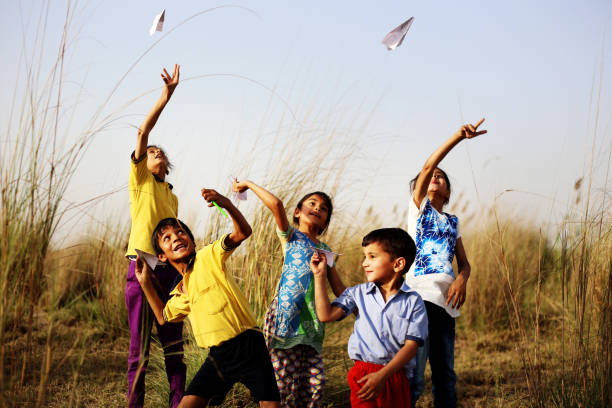
Symbolism and Themes
Symbolism and themes in writing are the secret tunnels that lead to hidden chambers within the reader’s imagination, a clandestine journey through a world of deeper meaning.
They are the riddles waiting to be unraveled, the enigmatic signs that form the literary constellations guiding the narrative’s path. Like alchemical elements, they transmute mere words into profound layers of thought, offering insights into human nature, society, and the human condition.
Whether it’s a recurring motif, a subtle metaphor, or a recurring symbol, they are the whispering guides that lead readers into the labyrinthine corridors of thought and reflection.
In the tapestry of storytelling, symbolism and themes are the mysterious relics, inviting readers to decode the hidden messages, to ponder the universal truths, and to explore the intricate tapestry of meaning woven into the narrative’s very fabric.
Frequently Asked Questions (FAQ) about How To Describe A Village In Writing
What’s the best way to begin describing a village in writing?
Start by visiting the village or recalling your memories of it to observe its unique characteristics and atmosphere.
Why is it important to choose a focus when describing a village?
Choosing a focus helps you organize your description and ensures that your writing conveys a clear and engaging message.
How should I structure my description of the village?
You can structure your description chronologically or thematically, using an outline to keep your thoughts organized.
What should I include in the introduction of my description?
The introduction should provide the village’s name and location and offer a brief overview of what readers can expect in your description.
How can I effectively capture the sights of the village?
Describe the village’s buildings, landmarks, and significant structures, paying attention to architectural style and historical context.
Should I mention the people in the village?
Yes, it’s important to introduce the community, describing the residents, their way of life, traditions, and occupations. Sharing personal encounters can make your description more engaging.
What are some ways to convey the atmosphere of the village?
Use sensory details to describe the sounds, smells, and general ambiance. Convey whether the village is bustling or serene.
Are there any unique features I should focus on when describing a village?
Highlight customs, festivals, or events that make the village distinct. Explain their significance in shaping the village’s culture.
Is it okay to include personal experiences in my description?
Yes, sharing your personal experiences and feelings about the village adds a personal touch to your writing and helps readers connect with your perspective.
How can I make my description more vivid and engaging?
Use descriptive language, including metaphors, similes, and expressive adjectives, to paint a vivid picture with your words.
How do I ensure a logical flow in my description?
Organize your description to transition smoothly between different aspects of the village, ensuring that the reader can follow your narrative effortlessly.
What should I include in the conclusion of my village description?
In the conclusion, summarize key points and leave a lasting impression. You can also share your overall feelings or insights about the village.
What’s the importance of proofreading and editing in this process?
Proofreading and editing ensure that your writing is free from grammar and spelling errors, enhancing the clarity and quality of your description.
Is it beneficial to seek feedback on my village description?
Yes, sharing your description with others and asking for their feedback can provide valuable input on how well your writing conveys the essence of the village and help you improve it.
Conclusion
In the art of describing a village in writing, we have embarked on a journey where words are our brush, and the page our canvas.
Through the vivid tapestry of sensory details, the rich characterization of villagers, and the delicate interplay of history and culture, we have unraveled the secrets of crafting a world both picturesque and profound.
A village, once a mere backdrop, emerges as a vibrant character in its own right, inviting readers to step into its heart and experience the world we’ve painted with our words.
This exploration reminds us that in storytelling, the power lies not just in the plot but in the world we create, for it’s a world where readers can escape, explore, and expand their horizons.
The art of describing a village is a testament to the magic of literature, where words have the power to transport, captivate, and resonate, leaving an indelible mark on the reader’s soul, and promising that the world we’ve crafted will remain alive in their imagination long after the story ends.




